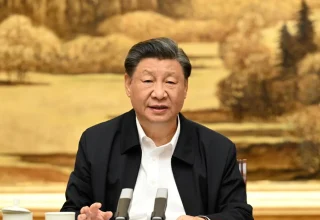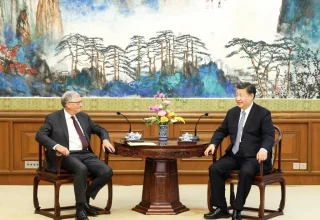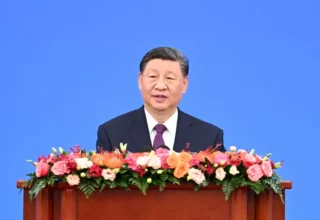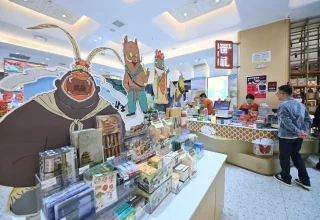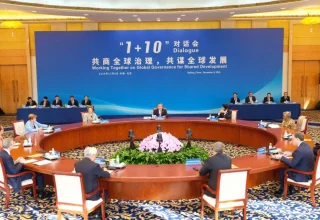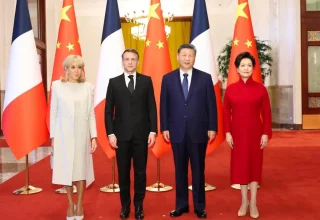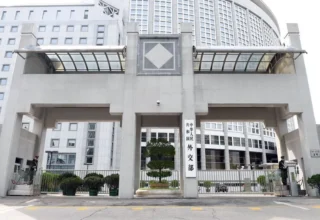
HONG KONG: Draped in a floor-length red ethnic costume, topped with an iconic embroidered flower hat, renowned Chinese dancer Yang Liping took to the stage at the Hong Kong Cultural Center, instantly igniting thunderous applause.
The “Tan Dun WE-Festival” commenced on Wednesday, with Yang’s choreographed drama dance, “Rite of Spring,” taking center stage as the grand finale of the first performance.
Coming once more to the culturally diverse city of Hong Kong, Yang said she hopes that the performance would foster understanding, appreciation, and admiration for the profound heritage and traditions of the East.
Yang’s connection with Hong Kong dates back to 1979 when, in her early twenties, she first visited the city to perform the Chinese ethnic dance drama “Peacock Princess.”
Recalling the past, she said, “As an ethnic dancer who had always performed in Yunnan, southwest China, stepping into such a modern city felt like entering a ‘glamorous world’.”
Over the past four decades, Yang has graced the stages of Hong Kong multiple times. Learning about the city’s development as an East-meets-West center for international cultural exchange, she nurtured a desire to showcase the rich tapestry of Chinese culture to the world through her artistic creations in this vibrant place.
Coincidentally, this aspiration resonated deeply with the internationally acclaimed composer Tan Dun, who serves as Hong Kong’s ambassador for cultural promotion.
“We share a common journey, having been born in rural areas of the Chinese mainland and trying to carve our paths in the realm of modern art,” Tan said.
Driven by their shared vision, the two artists recreated the dance drama “Rite of Spring.”
As the opening performance of the “Tan Dun WE-Festival,” the renewed “Rite of Spring” took the theater into eruptions of thunderous applause and jubilant cheers.
For decades, Yang has affectionately been known to audiences as the “Peacock Princess” due to her efforts to embody the image of the peacock on stage.
“Initially, I danced the peacock dance to express respect for life and admiration for beauty,” she said. As her artistic journey continued, she gradually discovered the cultural significance embedded in the graceful movements.
In Yang’s eyes, “the peacock in the East is much like the swan in the West, being a symbol of beauty and grace.”
In recent years, Yang has also dedicated herself to nurturing successors.
“The peacock dance is eternal, but I am not,” Yang said. “I am filled with immense gratification witnessing the growing love and appreciation for the peacock dance and the emergence of exceptional artistic creations.”
In addition to the peacock, Yang’s works are imbued with Chinese ethnic elements and traditional culture.
Growing up in an ethnic Bai family in Yunnan, Yang often danced in the fields and by the riverside during her childhood.
“Through dancing, we expressed the joy of the harvest and gratitude for the sun,” she reminisced.
For decades, she has dedicated herself to exploring and preserving ethnic culture, bringing to life the raw and colorful labor and life scenes of ethnic groups on the stage.
Simultaneously, her artistic exploration knows no boundaries. She blends elements of Peking Opera, martial arts, and contemporary dance, creating a dance drama “Under Siege,” enriching a well-known traditional story.
“To maintain a wellspring of creativity, one must appreciate and love their own culture,” she said. She believes that ethnic elements and traditions handed down by ancestors have endured the trials of time and are filled with vitality and vigor.
Over the past three years, during the Chinese Spring Festival, Yang has released a series of art films, creatively presenting traditional Chinese zodiac culture through dances.
“For me, dancing is not a profession or a duty; it is a spontaneous need in life,” Yang said. “Expressing my emotions and conveying my love and attitude towards the world through dances is what I excel at. Doing this brings me immense joy.”



